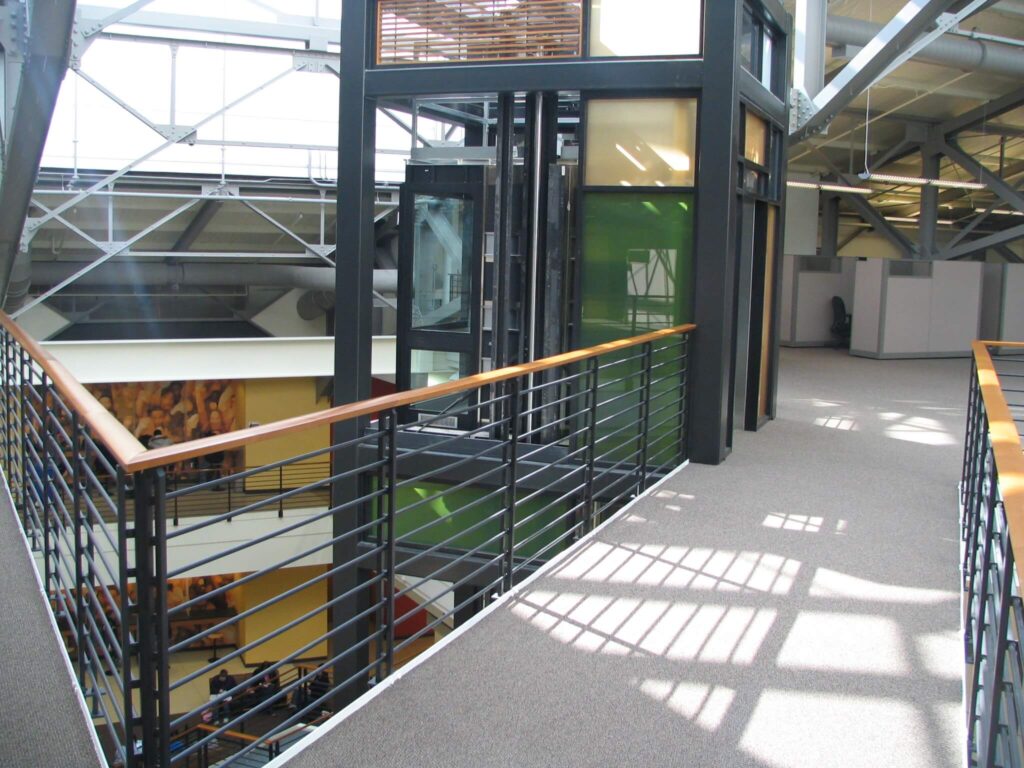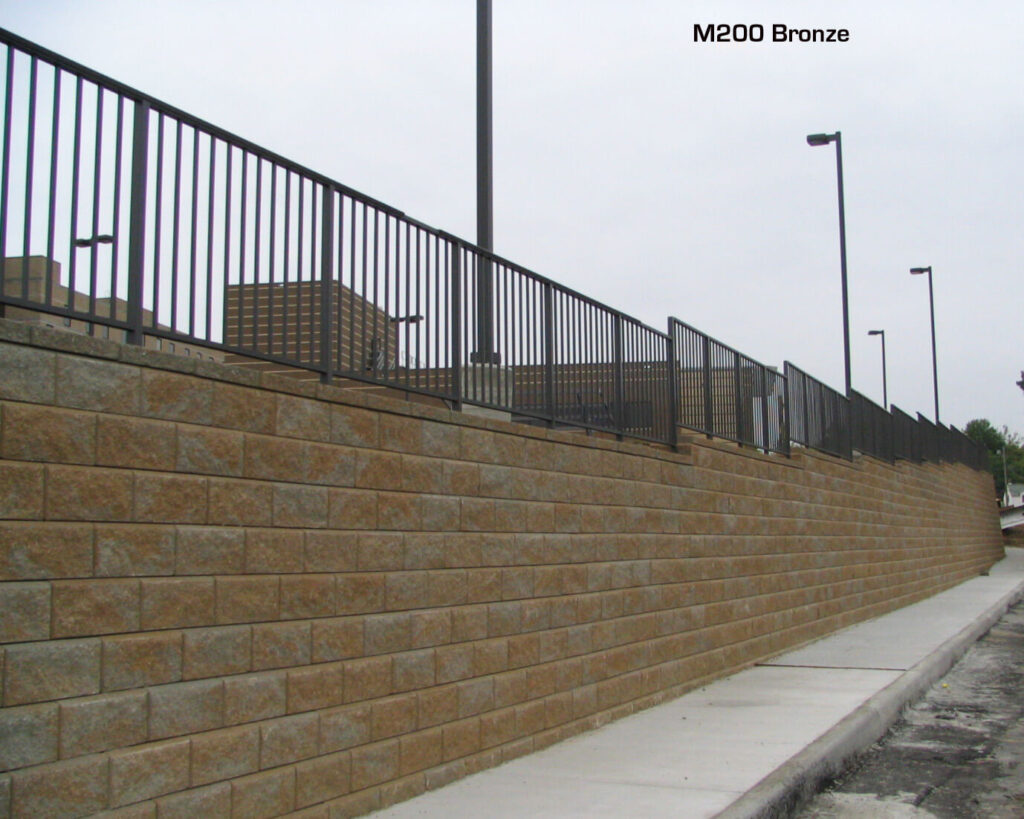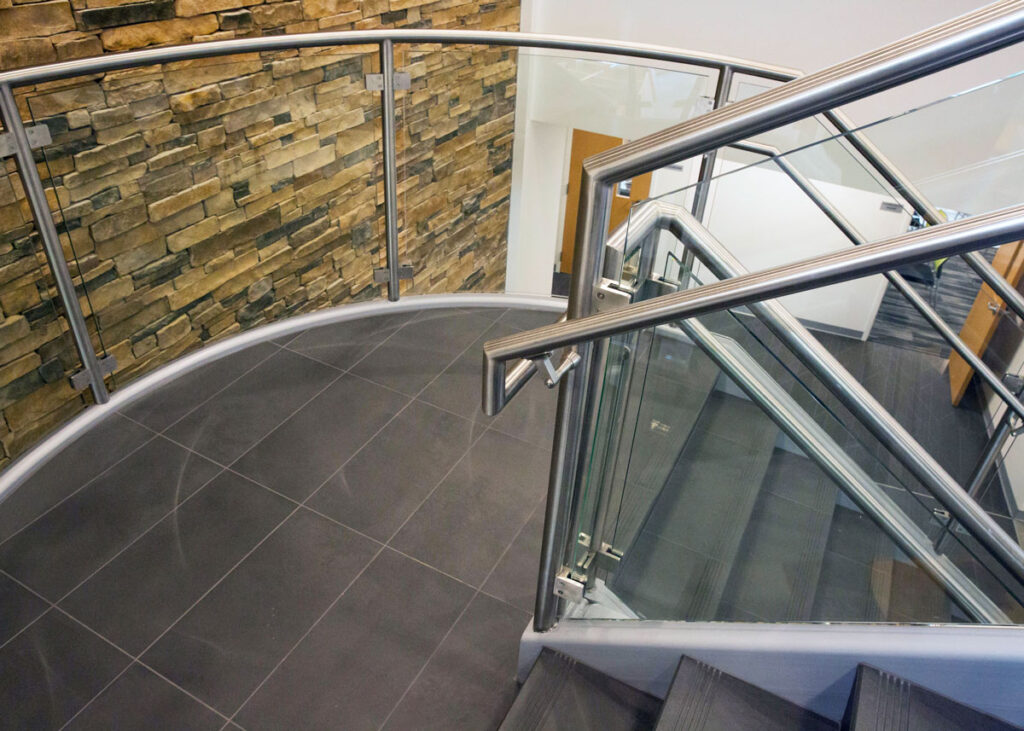On the topic of guardrail vs handrail and building safety/accessibility, the guardrail and handrail often play crucial but distinct roles. The confusion between the two is not uncommon, but the International Building Code (IBC) provides clear guidance on their differences and requirements. Guardrails and handrails are both essential components in various structures, serving different purposes. While handrails offer support and guidance to people traversing walkways and stairs, guardrails serve as life-saving devices by preventing falls from elevated surfaces. In this blog, we will delve into the differences between guardrails and handrails, and we will explore the IBC code requirements for guardrails to ensure safety and compliance
Guardrail systems are meticulously designed to prevent falls from elevated levels, such as decks, landings, staircases, elevated platforms, rooftops, and patios. These safety barriers act as visual warnings and physical obstacles that protect workers, occupants, or passersby from hazardous spaces. To meet the stringent safety standards, guardrails must exhibit exceptional strength, durability, specific dimensions, and proper placement. The Occupational Safety and Health Administration (OSHA) and local building codes govern these requirements.
To ensure safety and compliance with the IBC code, it is essential to meet the specific requirements outlined by OSHA. For instance, OSHA section 1910.28 mandates that guardrail systems must be used in areas where there is a risk of falling four feet or more from a higher level to a lower level. The top edge height of guardrails or equivalent guardrail system members should be set at 42 inches, with allowances of plus or minus 3 inches above the walking-working surface. Midrails must also be installed midway between the top edge of the guardrail system and the walking-working surface. Moreover, guardrail systems must withstand a force of at least 200 pounds applied in a downward or outward direction within 2 inches of the top edge at any point along the top rail.
For safety in discerning guardrail vs handrail, it is crucial to emphasize that meeting these code requirements demands expertise and precision. For this reason, consulting with professionals experienced in guardrail installations is recommended to ensure compliance with the IBC code and maintain a safe environment for all.
Handrail systems provide support and guidance to individuals navigating pathways, including stairways, ramps, hallways, and bridges. The design of handrails is pivotal to user comfort and safety, as they should be easy to grip and aid in maintaining balance while moving along the designated pathways. Additionally, the height of handrails must adhere to code requirements, ensuring accessibility and safety.

The IBC sets the standard for designing and installing handrails in commercial or industrial environments. According to the IBC, handrails must be located a minimum of 34 inches and a maximum of 38 inches above the stair, with measurements taken vertically from the stair tread nosing. When transitioning between flights or at the start of a stairway, handrails may slightly exceed the maximum height. In learning about guardrail vs handrail, it's important to understand this accommodation ensures a seamless experience for users.
The Americans with Disabilities Act (ADA) plays a critical role in shaping the guidelines for handrail systems in publicly accessible buildings and structures. ADA-compliant handrail systems are designed to maximize accessibility for individuals, regardless of their disability status. These systems must feature an easy-to-grasp continuous grip surface, which often incorporates grip-enhancing design elements. Adequate lighting is also essential to assist people with impaired vision in identifying and safely navigating guardrail vs handrail.
The International Building Code (IBC) is a cornerstone of building safety standards, specifically within the realm of guardrails and handrails. It sets forth minimum requirements to safeguard public health, safety, and general welfare in new and existing commercial buildings and structures. Developed under the International Code Council (ICC), the IBC serves as a model code and has undergone regular updates since its initial release in 2000. This code forms the basis for guardrail requirements across the United States, drawing upon the expertise of organizations like the NFPA, OSHA, ADA, and FHA.

Section 1015 of the International Building Code delves into the specifics of guardrails, emphasizing their role in fall protection. This section defines where guardrails are required and outlines the minimum requirements for their safe installation. Given that guardrails are life-saving devices, they must adhere to specific quality standards and conform to strict specifications.
In addition to the IBC, OSHA also enforces minimum strength requirements for guardrails, stating that they should withstand at least 200 pounds of pressure applied directly to the structure. This requirement is particularly crucial in industrial environments where the installation of guardrails is common.
IBC 2407.1.2 emphasizes that every guardrail must be supported by at least three glass balusters. This requirement is vital to ensuring that the guardrail remains secure even if one glass panel fails. Glass balusters must not be installed without an attached guardrail. Furthermore, measurements and loads must be placed at the "top of the guard" to guarantee the structural integrity of the system.

To ensure compliance with IBC code requirements, it is essential to adhere to the following specifications for guardrails:
Now that we've learned the difference between guardrail vs handrail, contact Alumina today to get your home or business set up properly!